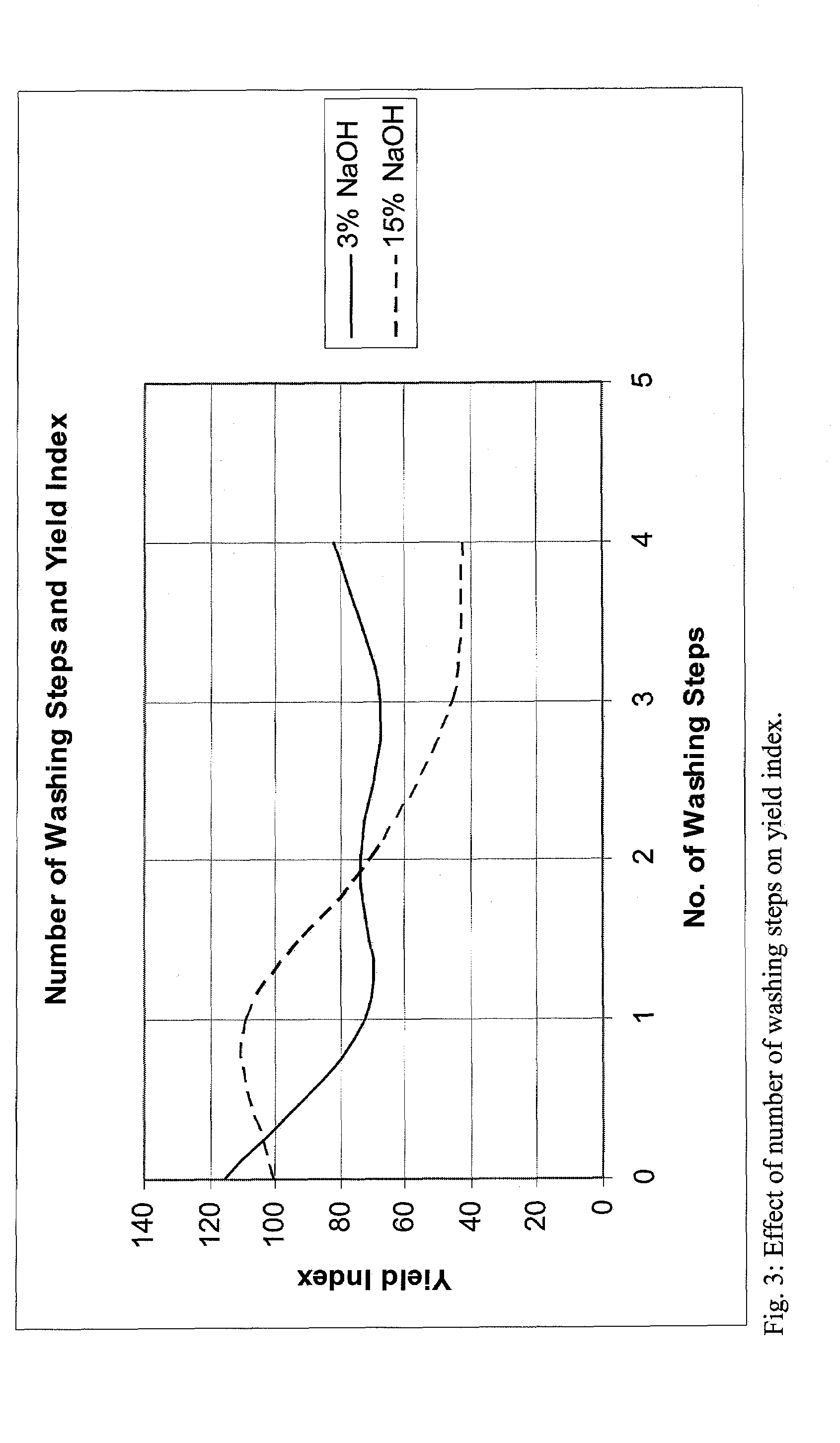Carrageenan Process
a carrageenan and process technology, applied in the field of carrageenan process, can solve the problems of inability to further reduce the gelling and melting temperature of compositions containing carrageenans, limited extent to which the gelling cation level can be reduced, and high levels of other gelling cations
- Summary
- Abstract
- Description
- Claims
- Application Information
AI Technical Summary
Benefits of technology
Problems solved by technology
Method used
Image
Examples
examples
[0166]The invention will now be described in more detail with respect to the following non-limiting examples which were performed with the above described equipment, materials and methods.
[0167]The following Examples with data set forth in tables 1-8 relate to results obtained by treating the red seaweed Eucheuma spinosum with an alkali according to the present invention. The results obtained from the present invention were compared with comparative, prior art neutral extractions, in which the washed seaweed was extracted in demineralized water for one hour at 90° C.
[0168]TG and TM stand for gelling temperature and melting temperature, respectively, while TD is the dissolution temperature, and η stands for intrinsic viscosity at 60° C. The “% yield” is calculated as: % yield=(g. dry precipitate×1500×100) / (g. seaweed×g. precipitated extract×seaweed dry matter). Since yield of polymer from seaweed changes with season and with seaweed harvesting location, the yield of neutral extractio...
PUM
| Property | Measurement | Unit |
|---|---|---|
| Temperature | aaaaa | aaaaa |
| Temperature | aaaaa | aaaaa |
| Temperature | aaaaa | aaaaa |
Abstract
Description
Claims
Application Information
 Login to View More
Login to View More - R&D
- Intellectual Property
- Life Sciences
- Materials
- Tech Scout
- Unparalleled Data Quality
- Higher Quality Content
- 60% Fewer Hallucinations
Browse by: Latest US Patents, China's latest patents, Technical Efficacy Thesaurus, Application Domain, Technology Topic, Popular Technical Reports.
© 2025 PatSnap. All rights reserved.Legal|Privacy policy|Modern Slavery Act Transparency Statement|Sitemap|About US| Contact US: help@patsnap.com



